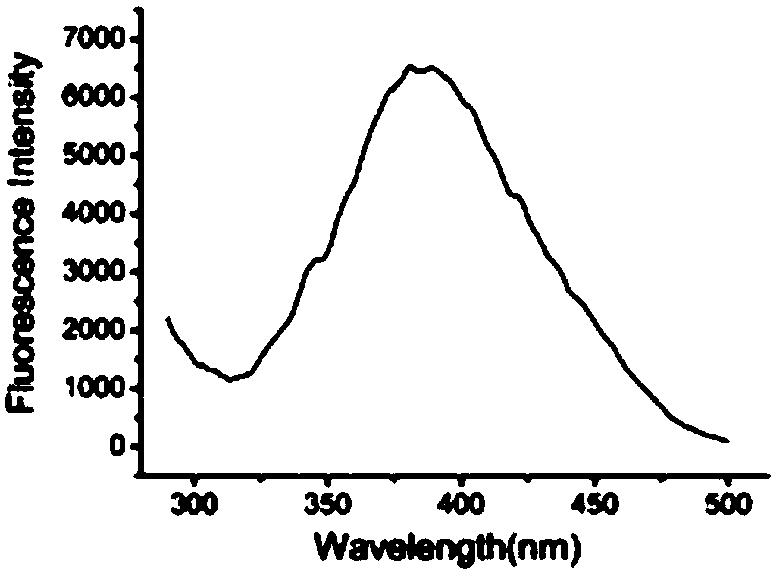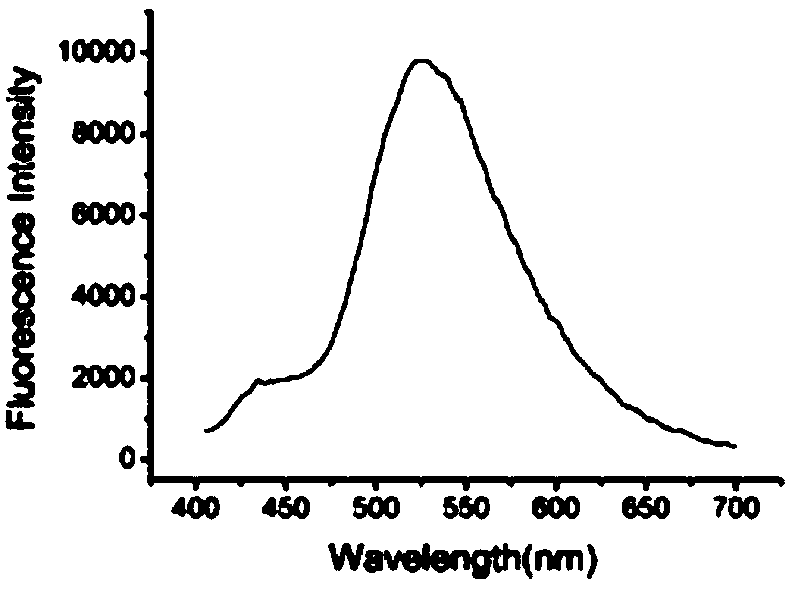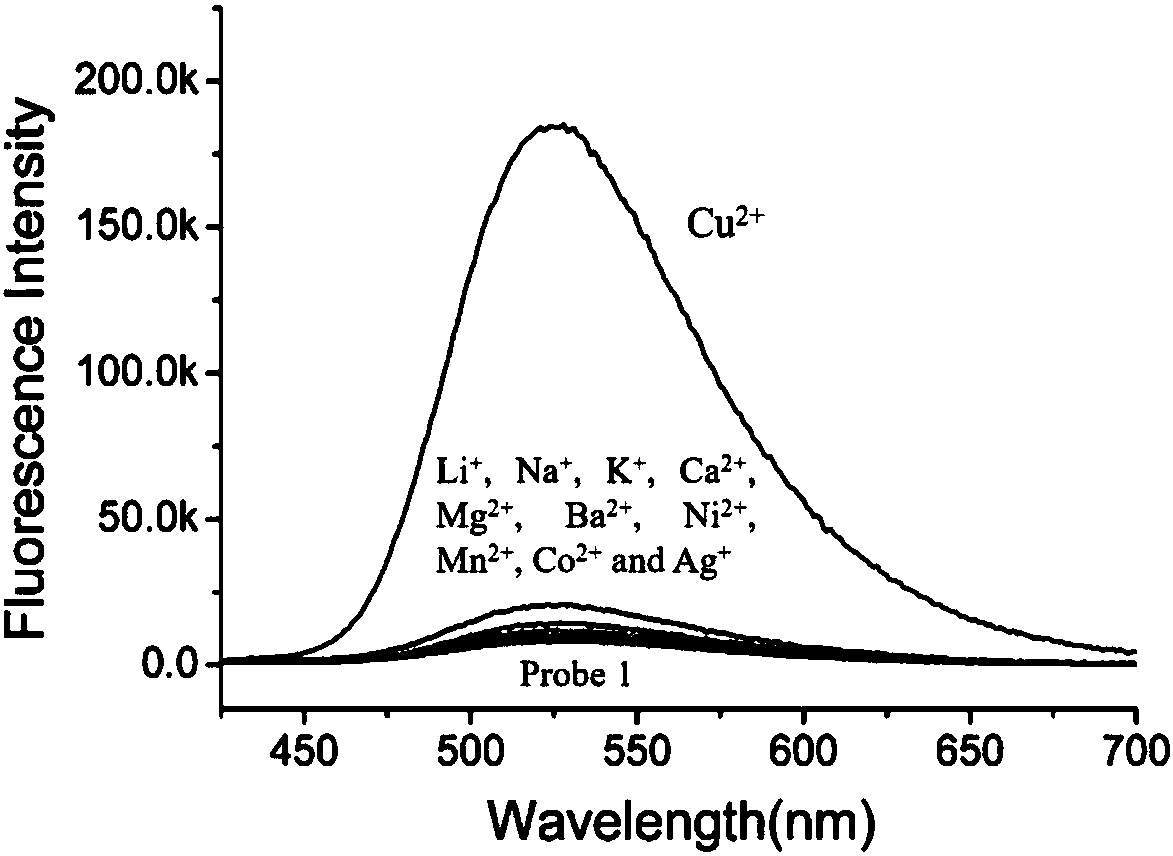Two-photon fluorescent probe for detecting Cu (II) and preparation method and application of two-photon fluorescent probe
A two-photon fluorescence and probe technology, applied in fluorescence/phosphorescence, chemical instruments and methods, luminescent materials, etc., can solve problems such as gastrointestinal dysfunction and human toxicity
- Summary
- Abstract
- Description
- Claims
- Application Information
AI Technical Summary
Problems solved by technology
Method used
Image
Examples
preparation example Construction
[0030] A method for preparing a two-photon fluorescent probe for detecting Cu(II), specifically comprising the following steps:
[0031] Step 1, 4-bromo-1,8-naphthalene anhydride and N-(2-aminoethyl)morpholine are added to the round bottom flask A with a material ratio of 1:1, and then added to the round bottom Add ethanol to flask A, place round bottom flask A in an 80°C oil bath, stir and reflux the solution in round bottom flask A with a magnetic stirrer for 2 hours, and suction filter the reaction system while it is hot to obtain compound A, compound A The structural formula is as follows:
[0032]
[0033] Step 2, the compound A obtained in step 1 and hydroxyethylpiperazine are added in the round-bottomed flask B in the ratio of 1:1 in the ratio of substance, and then ethylene glycol methyl ether is added in the round-bottomed flask B until the compound A is completely dissolved, and the round bottom flask B is placed in an oil bath at 125°C, and the solution in the r...
Embodiment 1
[0035] Embodiment 1: the synthesis of fluorescent probe Probe 1:
[0036] To 100 mL round bottom flask A was added glacial acetic acid, 4-bromo-1,8-naphthalene anhydride (2.77 g, 0.01 mol), n-butylamine (4.93 mL, 0.05 mol). In an oil bath at 80°C, the magnetic stirrer was stirred and refluxed for 2 hours, and the reaction system was filtered while hot to obtain Compound A; (1.0132g, 3.06mmol) Compound A, (0.39mL, 3.06mmol ) hydroxyethylpiperazine and ethylene glycol methyl ether, stirred and refluxed at 125°C for 24 hours, cooled the reaction system to room temperature, and distilled under reduced pressure to remove ethylene glycol methyl ether to obtain solution A, using dichloromethane and methanol volume ratio Probe 1 (yellow powder), 0.71 g, was obtained by column separation with an eluent of 100-10:1, yield: 61.11%. 1 H NMR (CDCl 3 , 400MHz, ppm), δ8.58(dt, J=10.5,5.2Hz, 1H), 8.52(dd, J=8.2,0.9Hz, 1H), 8.40(d, J=8.6Hz, 1H), 7.69( t,J=8.5Hz,1H),7.23(d,J=9.0Hz,1H),4.34–4...
Embodiment 2
[0038] Embodiment 2: Fluorescence spectrum test of fluorescent probe:
[0039] Dissolve the fluorescent probe of the present invention in CH 3 CN-H 2 In the solution of O (4:1, v / v), the concentration is 10 μM, and its excitation and emission spectra are detected by a fluorescence spectrometer, as shown in Figure 1 (Figure 1(a) is the excitation spectrum of Probe 1, and Figure 1( b) is the emission spectrum of Probe1): the maximum excitation wavelength of the fluorescent probe of the present invention is at 385nm, and the maximum emission wavelength is at 530nm.
[0040] in CH 3 CN-H 2O (4:1, v / v) solution, add Probe 1 (10μM), and then add 40μM Li + 、Na + 、K + , Ca 2+ , Mg 2+ 、Ba 2+ 、Ni 2+ , Mn 2+ 、Co 2+ 、Ag + and Cu(Ⅱ) metal salt solution, and then put the fluorescence cuvette in the FS5 fluorescence spectrometer for testing to study the selective recognition of Probe1 for metal ions. The test results are as follows figure 2 : Only when 40μM Cu(II) is added, the...
PUM
 Login to View More
Login to View More Abstract
Description
Claims
Application Information
 Login to View More
Login to View More - R&D
- Intellectual Property
- Life Sciences
- Materials
- Tech Scout
- Unparalleled Data Quality
- Higher Quality Content
- 60% Fewer Hallucinations
Browse by: Latest US Patents, China's latest patents, Technical Efficacy Thesaurus, Application Domain, Technology Topic, Popular Technical Reports.
© 2025 PatSnap. All rights reserved.Legal|Privacy policy|Modern Slavery Act Transparency Statement|Sitemap|About US| Contact US: help@patsnap.com



